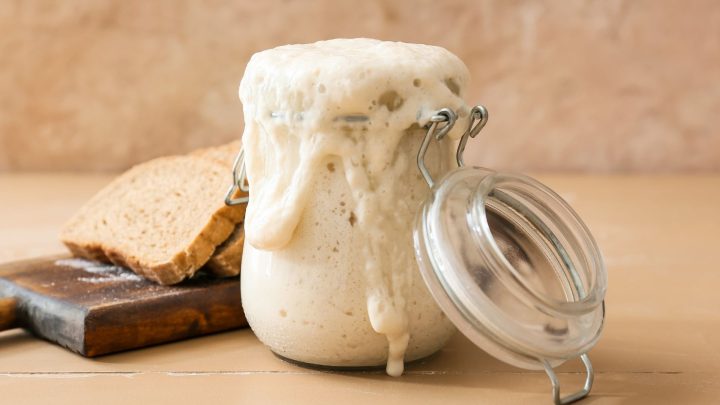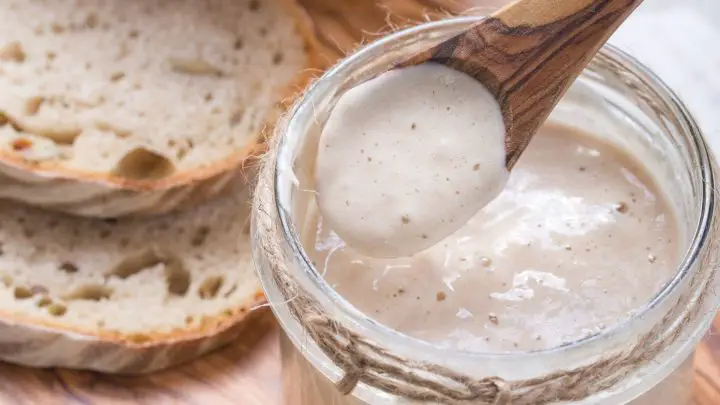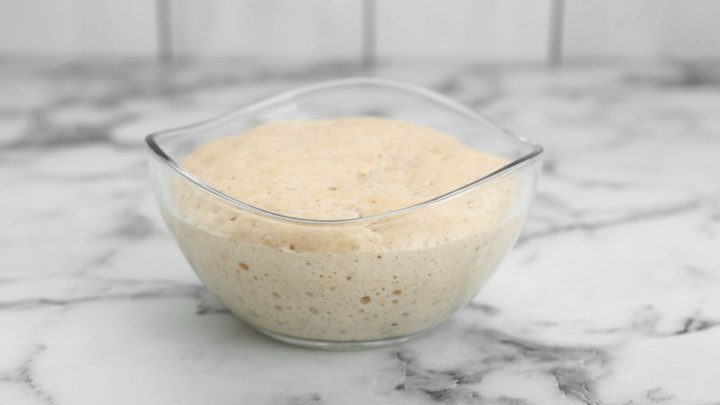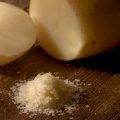Understanding why you must discard your sourdough starter is extremely important for maintaining its health and achieving delicious loaves. By removing a small portion of your starter regularly, you allow beneficial microorganisms to flourish. You also prevent overgrowth and getting overwhelmed by too much starter! There are actually many benefits to discarding your sourdough starter. So here’s why you need to.

Table of Contents
- What is Sourdough Discard?
- What Happens If You Don’t Discard Some Of Your Sourdough Starter?
- What Is Actually Happening When You Discard Your Sourdough Starter?
- Why Discard Sourdough Starter Before Feeding?
- Is Discarding Sourdough Starter Wasteful?
- Why Would I Want To Store My Sourdough Discard Instead of Throwing It Out?
- Where Should I Store My Jar of Sourdough Discard?
- Does Sourdough Discard Need To Be Fed?
- What Happens When My Sourdough Starter Matures
- Discarding Sourdough Starter is a Must!
- FAQs
What is Sourdough Discard?
Sourdough discard refers to the portion of sourdough starter that is discarded during feeding. A sourdough starter is regularly fed with fresh flour and water to maintain its vitality. A small amount of the mature starter has to be discarded to make space for new feedings.
This portion of discard is not wasted. Instead many bakers choose to re-purpose it in various recipes.
While it might not be suitable to use for leavening sourdough bread due to the absence of yeast activity, sourdough discard offers a scrumptious way to reduce waste and explore a variety of baked goods.
What Happens If You Don’t Discard Some Of Your Sourdough Starter?
If you forget or refuse to discard a portion of an active sourdough starter before each feed, then several issues may occur.
- Since the starter continues to grow, the population of microorganisms becomes imbalanced. This is because the starter thrives when fed. The bacteria will continue to produce tangy flavors at an increased rate, therefore compromising flavors when baking bread.
- Additionally, excess acidity inhibits yeast activity, which leads to poor rising and dense sourdough bread.
- Without discarding, the starter’s consistency can also become too thick, making it harder to mix in more flour and water.
Discarding a portion of starter regularly helps maintain the health of your active starter in time for bread baking.
Can I Feed My Sourdough Starter Without Discarding?
If you choose not to discard, then you must adjust the feeding ratios to maintain a healthy balance of microorganisms. Although this approach may risk a larger starter quantity which can be quite challenging in terms of storage.
The starter may become more acidic and less flavorful, therefore affecting your bread’s rise and flavor. Regular discarding ensures better flavor, prevents over-fermentation, and provides a pathway in creating delicious sourdough starter discard recipes.

What Is Actually Happening When You Discard Your Sourdough Starter?
When discarding a portion before you feed your starter, you’re essentially removing a section of the mature starter and replacing it with fresh flour and water.
This makes the starter easier to manage, helps maintain a balanced population of microorganisms, ensures a healthier starter, and eliminates the byproducts of fermentation that can build up over time and impact the starter negatively.
Throwing out a portion of sourdough starter means you can refresh the starter regularly. This promotes yeast and lactobacilli activity, resulting in a vibrant and flavorful batch of sourdough.
Why Discard Sourdough Starter Before Feeding?
Discarding sourdough starter is an essential process required to bake bread. Despite the term “discard” maybe having a negative connotation, it actually benefits your starter’s health and overall performance.
Discarding starter between feedings enable the microorganisms in the starter to consume the available nutrients, producing acids and alcohol.
If left unattended, the excess starter can lead to over-acidification, therefore hindering yeast activity, then resulting in flat, or less flavorful bread. You can also get overwhelmed by too much starter.
Is Discarding Sourdough Starter Wasteful?
Initially, discarding sourdough starter may seem wasteful on the surface. But it’s important that you understand the importance of discarding, especially when it comes to achieving a healthy and functioning starter.
Discarding sourdough starters can actually be quite fun. Once you’ve gathered enough to fill a jar, you can use this in various sourdough recipes. A few I have on my blog are:
- Best Sourdough Biscotti Using Sourdough Discard
- Sourdough Discard Biscuits Recipe
- Sourdough Discard Granola Bars Recipe
- Easy Sourdough Discard Crumpets Recipe
You may require an additional leavening agent – such as baking powder or baking soda – to help the baked goods develop a good rise.
In fact, discarded starter only encourages minimal waste, and makes for an incredible secret ingredient for your recipes.
Why Would I Want To Store My Sourdough Discard Instead of Throwing It Out?
Storing your discard instead of throwing it out offers several benefits.
- Firstly, this practice reduces waste.
- Secondly, the discard can be reused in a variety of recipes, ranging from sweet to savory dishes.
The discard can be kept in the fridge or freezer, enabling you to collect enough for future baking.
Can I Use Sourdough Discard?
Absolutely!
Sourdough discard is incredibly versatile and a flavorful ingredient that simply must not go to waste.
Instead of throwing it out, you can add sourdough discard waste to recipes to create a fun little tangy twist. From soups and stews to pizza crusts and muffins, there’s no limit to what you can do with it!

Where Should I Store My Jar of Sourdough Discard?
You should store your jar of discard in the refrigerator. The cold temperature slows down the fermentation process and keeps the discard dormant, therefore preserving its quality.
Before storing your jar of leftover starter, ensure that it has a secure lid to prevent it from drying out or absorbing odors from the fridge. Label the jar with a date to monitor its freshness.
Alternatively, you can opt to freeze the discard if you don’t plan to use it for an extended period of time. Appropriate storge in the fridge or freezer enables a sourdough baker to use the discard as it remains ready for future bakes.
Does Sourdough Discard Need To Be Fed?
When stored in the fridge or freezer, it does not require regular feedings, as the fermentation has slowed down due to cold temperatures.
However, if you do plan to use the sourdough discard, then it’s important to refresh it with flour and water before adding it to your recipes. This revives the dormant microorganisms, ensuring better leavening and flavor.
Once you’re ready to use the discard again, remove it from the fridge or freezer and allow it to come to room temperature before feeding it to reactivate.
What Happens When My Sourdough Starter Matures
As your sourdough starter matures, it transforms into something delicious and amazing. A new sourdough starter may exhibit wild and unpredictable behaviors, such as an inconsistent rise and aroma. However, as it progresses with each feed, the microbial population stabilizes, and the starter becomes more predictable and reliable.
The lactobacilli and yeast strains develop a healthy balance leading to increased fermentation activity and better leavening properties. The starter’s aroma becomes pleasantly tangy. And when added to sourdough recipes it creates a distinct and wonderful flavor.
A mature starter delivers a consistent rise, creating light, airy loaves with a wonderful tang.
Discarding Sourdough Starter is a Must!
Discarding sourdough starter is an essential practice in the world of sourdough baking, and ensures a healthy and robust microbial balance. While this may seem wasteful to some, this process prevents overgrowth, leading to better fermentation and flavorful bread.
FAQs
When Can You Use Sourdough Discard?
You can use your sourdough starter discard any time. In fact, you can use it to make delicious sourdough discard recipes, like crackers and pizza crusts. The discard adds tangy flavor to many recipes. Reusing the discard reduces waste and opens up a world of delicious possibilities.
What Should I Do With My Sourdough Discard If Mold Develops?
If mold develops on your discard, then you must discard it immediately. Mold growth indicates contamination, making it unsafe for consumption. To prevent mold, you must store your discard in a clean, airtight container in the refrigerator or freezer.
If I Neglect My Discard, Do I Have to Toss It?
No. While it may be tempting to toss the discard, you can revive it by feeding it regularly over a few days to regain activity and flavor.



![How Much Sourdough Starter To Use? [Does The Amount Matter?] 6 How much sourdough starter to use? [does the amount matter? ]](https://www.mydailysourdoughbread.com/wp-content/uploads/2023/01/blog-images-53-120x120.jpg)

